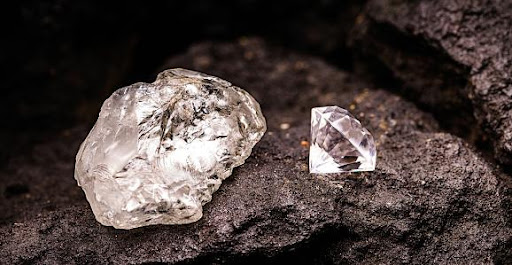
The cut is a stunning combination of art and science. Cutters have to be able to see the future in their diamonds, because the cut is what will determine how the stone looks. If you want to make sure your diamond sparkles like never before, then it’s time for you to learn about the art of diamond cutting.
Diamonds are one of the most precious and durable gemstones on the planet, with a sparkle that can only be matched by their value. And while diamonds are naturally quite hard, they can't be worn as is: they have to be cut and polished into a more desirable shape and design. In this article we'll take a look at how diamonds are cut, from start to finish.
The cut is a stunning combination of art and science. It gives the diamond its brilliance, fire, scintillation and sparkle. To achieve a perfect cut requires a highly skilled craftsman with years of experience who can see what cannot be seen by the naked eye.
In diamond cutting, proportions matter: The ideal proportion for a round brilliant-cut diamond is 52% for the diameter versus 58% for its height (this ratio is known as the “ideal crown height”). For an oval or cushion-shaped stone, this ratio increases to about 57/63; for pear shape it decreases to about 53/57; and for marquise it's about 53/55.
The cut of a diamond is determined by several factors, including the size, shape and quality of the rough stone. The cutter must take into account the shape and size of the stone as well as its flaws, in order to maximize light reflection.
You may think that diamonds are the hardest natural substance, but they actually rank only second to moissanite (which is a man-made material). Diamonds are also the only gemstone that is naturally transparent—you don't have to add color, unlike with sapphires or rubies. This makes it possible for you to see every facet of your diamond when you look through it—and if you're going for an engagement ring, this can be a big deal!
There are many different types of cuts used on diamonds: round brilliant cut; princess cut; cushion cut; emerald cut; heart shape; marquise shape and more! The most popular type however is the round brilliant which is what we'll focus on here. The cut itself is actually an art form as well as a science because there's so much more than just making sure your stone fits in its setting properly--it has to reflect light perfectly off all sides so it sparkles like crazy without losing any brilliance through leakage or scintillation loss caused by poor angles along edges where light enters from outside sources such as windows when viewing outdoors somewhere other than inside your own home because otherwise those stray rays won't hit anything inside at all except maybe shadows cast against walls behind curtains drawn closed during daylight hours while still allowing some sunlight through windows outside shining directly into them onto surfaces below such as cabinets etc.
The science behind this is that diamonds are perfect conductors of heat and electricity which means they don't lose any energy through conduction or convection at all so even if you store your diamond in liquid nitrogen it will not be damaged as long as it stays there!
Cutting is the first step in the diamond making process. It's done by a diamond cutter, and it's essentially the process of removing excess weight from a rough diamond. During cutting, you'll work with a variety of tools that are used to shape and smooth your stone into its final form. This can be done using hand tools or more advanced machinery depending on what kind of cut you're aiming for—and there are many types!
When a diamond has been selected and cut, it will be sent to the bench worker to be polished and finished. This process is done by hand using a special type of sandpaper called jeweler's rouge, which is made from pulverized corundum (or aluminum oxide). The rough diamond must be polished carefully so as not to damage its surface or alter its shape.
If you're buying a diamond for an engagement ring, it's likely that you'll want a well-cut stone. The cut is a stunning combination of art and science. A good cut diamond will have many of the following characteristics:
The diamond cut is a stunning combination of art and science. As you'll see, there are several different types of cuts, each with its own unique properties. Diamond cutters are artists who work with the raw material of diamonds to shape them into the most beautiful gems possible. In order to achieve this goal, they use science to perfect their craft.
In this guide we will break down what makes each type of diamond cut so special and discuss how it affects the overall appearance of your diamond ring or engagement ring (ring not included).
Ready to sell your diamond and get the best price? Let Diamond Registry's global connections and expert team help you find the perfect buyer. Visit www.diamondregistry.com/sell-your-ring now to get started. And don't forget to use our trusted diamond price calculator to instantly check and calculate the value of your diamond per carat.
Want to check and calculate diamond per carat instantly? Go to DR’s diamond price calculator to know how. Reliable and trusted carat calculator in the diamond industry since!

